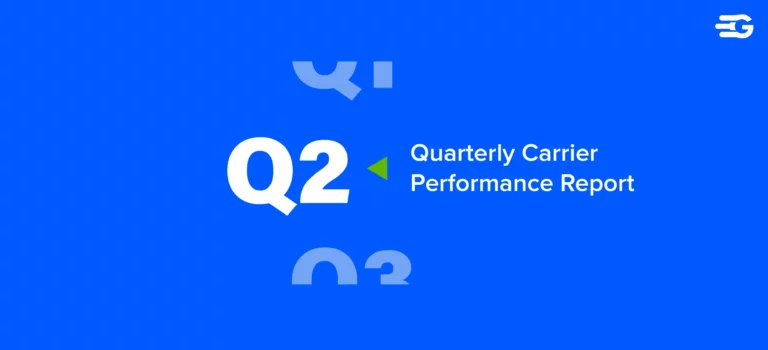What is an Advanced Shipping Notice (ASN)?
What is an Advanced Shipping Notice (ASN)?
The steady flow of the supply chain plays a significant role in the economy of a country. For every operation to be running seamlessly, each link in the chain must be optimized. This means that deliveries are timely and the customers are satisfied. Among the essential tools that work in favor of reaching the assigned objectives is the ASN, which is known as Advanced Shipping Notice. In this blog, we’ll explore the world of ASNs, focusing on their significance, features, advantages, implication procedures, remarkable challenges, and the exceptional role of ASNs in current logistics.
The Significance of ASN in Modern Logistics
Fundamentally, an ASN (Advanced Shipping Notice) is a notice sent by the supplier ahead of the arrival of a product to its recipient. This notice gives a detailed explanation about the goods being shipped like what it is, the number of units, and the types of packaging as well as the delivery timeline. The ASN functions as a fundamental communication channel between partners of trade, which in turn helps to coordinate and come up with trade programs.
Today, milestones in the logistics arena are hinged on the ability of an ASN to ensure goods transit in an orderly fashion to their delivery addresses. Consequently, this facilitates haulage operations efficiently and effectively. Through the course of ASNs getting rejected, the recipient could plan and make ready for the receiving process much earlier. The quoted command forwarded to us would not only furnish the organization with a vaccination policy, but also help the smooth operations with its inventory holding low costs, and assist the company to avoid the deliveries and discrepancies interferences.
Key Components of an ASN
A typical Advanced Shipping Notice comprises several key components, each serving a specific purpose in facilitating efficient logistics operations: A typical Advanced Shipping Notice comprises several key components, each serving a specific purpose in facilitating efficient logistics operations:
1. Sender and Receiver Information: Identifies the parties to the transaction, giving their names, addresses, and contacts, so to speak.
2. Shipment Details: Stores data about shipment like a tracking number, carrier information, type of transport, and ETA.
3. Product Descriptions: Specifies detailed information about the shipping matters among those being shipped, such as nomenclature, description, quantity, and unit of measure.
4. Packaging Information: Arrange how the products are packaged, for example, the number of cases, weight, dimension, and palletization specifications.
5. Handling Instructions: Sends along any special handling rules or demands for the cargo, for example, objects that require temperature control or hazardous substances.
6. EDI Transaction Set: In electronic data interchange (EDI) systems, purchase orders are usually sent using the EDI 856 transaction sets, which format the transactions for the exchange of shipping-related information between the trading partners.
Benefits of Implementing
The implementation of Advanced Shipping Notices offers numerous benefits to supply chain stakeholders: The implementation of Advanced Shipping Notices offers numerous benefits to supply chain stakeholders:
1. Improved Inventory Management: ASNs, which provide forecast visibility of incoming deliveries, serve toward meeting inventory requirements more accurately, resulting in preventive measures such as overstocking or stock-outs.
2. Reduced Errors and Discrepancies: By informing parties about the specifications of shipment ahead of time, an ASN reduces the receiving process’s spot errors, including inaccurate amounts or damaged goods.
3. Enhanced Customer Satisfaction: ASNs guarantee to speed up order processing and fulfillment and contribute to customer satisfaction and loyalty, hence, tend to increase.
4. Streamlined Receiving Processes: Due to once acquired information of upcoming deliveries the buyers may make preparations of receiving areas well beforehand and re-allocate their human resources thus reducing the turnover time and payroll.
Streamlining Warehouse Operations
ASNs are the most efficient part of warehouse operations which help to maximize the process and therefore increase the value of the services. The supply chain can make more educated decisions with the ASNs that give forecasting over incoming shipments in advance, which in turn helps the warehouse managers to fit their activities for receiving, storage, and distribution. This one-step motion prevents the occurrence of the shortage of space, warehousing, and storage at its main port and enhances the agreement’s efficiency as a whole.Additionally, platforms like GoComet offer robust solutions to optimize warehouse operations, aligning them seamlessly with ASN processes.
ASNs not only make the warehouse process easier by allowing real-time tracking and reconciliation of incoming shipments and any shortages or excesses, but they also ensure there’s an accurate record of the inventory. Now that it’s transparent, warehouse managers can accurately watch the inventory to catch shortages, surpluses, or any other disruptions and take corrective actions, accordingly.
Moreover, ASNs back JIT (just-in-time) inventory management applications with the transmittance of the incoming shipment details. This in turn ensures that the inventory level is lean without compromising on timely replenishment to address customers’ requirements almost immediately.
Creating and Implementing an Effective ASN
Creating an effective advanced shipping notice needs subtle attention and harmonious accompaniment. Here are some steps and best practices to consider: Here are some steps and best practices to consider:
1. Understand Requirements: First of all, learn the ASN specifications your company consignees need. This will deal with the necessity of the allocation mechanism or the scheme, consisting of the format and contents of ASNs, and the transmission method that is used to send the ASNs.
2. Integrate with ERP System: Set up ASN generation functionalities within your existing Enterprise Resource Planning (ERP) or Warehouse Management System (WMS) to automate it and hence gain accuracy.
3. Standardize Processes: Define and establish standard procedures for issuing static ASNs (SA), dynamic ASNs (DA), and for the process of receiving ASNs across your organization
4. Train Personnel: Provide employees who are taking part in the ASN process with the training necessary to make it clear what parts they should play and to be able fully to use the ASN.
5. Monitor Performance: Consistently record and analyze ASN performance indicators including delivery time accuracy and ASN accuracy as a way to identify where to improve and optimize the system overall.
Challenges in Adoption and Solutions
However the profit from the supplies of ASN confirmation, companies will encounter several obstacles and do their best to implement ASCs.Some common challenges include:
1. Integration Complexity: Connecting ASC capabilities to existing systems and processes may be hard and costly, as it takes time and poses coordination challenges among them and the IT teams, partners, and vendors.
- Solution: The investment in the effective integration tools and platforms which will lead to the integration process being streamlined and creating a work environment in which the systems can talk to each other seamlessly is approved.
2. Data Accuracy: The problem of guaranteeing the validity of ASN information like product descriptions, amounts, and delivery schedules is growing bigger if we are depending on the system of manual data entry, or if data are in different systems.
- Solution: Introduce data validation mechanisms and automate data capture as much as possible to avoid corruption and non-conformity in reporting.
3. Compliance Requirements: These requirements then may differ, firstly from that of the trading partners and customers, and then from that of the various regulatory agencies having a fixed set of standards and specific protocols to comply with.
- Solution: Educate yourself with the global industry standards in ASNs, and make use of available technology solutions that are meant to support compliance, like the EDI format.
4. Supplier Cooperation: It is very challenging to access true and time-sensitive ASN data from suppliers with promptness if they lag or lack the ready systems or skills.
- Solution: Engage suppliers closely by providing them with education on ASN benefits and be ready to support and assist suppliers in implementing the process and technology needed to avail the perks of ASNs.
These obstacles can be overcome with the right approach and the adoption of appropriate solutions. By leveraging platforms like GoComet, businesses can address challenges effectively, streamline their ASN processes, and unlock the full potential of advanced shipping notice in optimizing their supply chain operations.
The Future of ASNs
As for the future of Advanced Shipping Notices, it brings a lot of exciting things all due to the new technologies, the adaptation of the industry standards, and also changing attitudes towards the salary packages of the workers. Some key trends and developments to watch for include: Some key trends and developments to watch for include:
1. Increased Adoption of EDI: Since the E-DIS (Electronic data interchange) usage keeps surging in the logistics industry, there will be a higher extent of ASNs being transmitted through E-DI, which subsequently improves the connectivity and data reliability between the trading partners.
2. Integration with IoT and AI: The participation of ASNs with sensors of the IoT and artificial intelligence networks (AI) controls the way the visibility and management of the supply chain will prevail. Through the utilization of data from IoT devices and AI’s capability for predictive analysis, organizations can now track the condition of all goods and adjust accordingly to deal with evolving market demand.GoComet integrates IoT and AI capabilities into its platform, enabling businesses to leverage advanced technologies for enhanced supply chain visibility and management.
3. Blockchain Technology: Blockchain technology provides a secured and transparent system to register and monitor ASN transactions, which results in the whole history that asserts shipment information from sender to recipient. Blockchain is the technology that helps verify, verify the supply chain data for businesses. As a result, ensures trust, transparency, and traceability for businesses.
4. Expansion of Global Trade: It is important to notice that the globalization of trade would further the role of ASNs in the creation and management of cross-border shipments and logistics within the international sphere. ASNs contribute significantly to the collection of customs tariffs, the execution of customs processing, and the reduction of additional costs and delays that happen during the movement of international goods.
Moreover, ASNs provide support against global uncertainty issues including geopolitical instabilities, trade wars, and natural calamities issues that affect production and transport. ASNs provide early notification for businesses to foresee incoming shipments. Consequently, the companies can easily make a proactive plan for mishaps, which can also include alternative options in case there are unavoidable delays.
Conclusion: Enhancing Supply Chain Visibility
Finally, ASNs (Advanced Shipping Notices) constitute the core part of modern logistics and supply chain management. Increasing visibility of shipments arriving in advance enables companies to organize their operations more effectively, make fewer errors, and increase customer satisfaction. This helps in avoiding stockouts, reduces errors, and facilitates international trade for a range of supply chain stakeholders.
The successful operation of the switch to the ASN system necessarily includes planning and collaboration among logistics participants. Organizations may need to apply resilient systems, personnel training, and handle problems like architecture complexity and data precision so that they can take advantage of all ASN benefits.
In the light of the future, there is plenty of room for the growth of the role of ASNs, due to technological advancements, international standards evolving, and the increased complexity of the global supply chains. As companies continue to give prominence to supply chain visibility, transparency, and efficiency, ASNs will still be an important instrument for realizing these values and keeping up in the hectic logistics arena of today.
In essence, Advance Shipping Notices is an all-inclusive application that has the power to make logistical operations more effective, increase supply chain transparency, and as a result, help businesses prosper in the highly interconnected and rapid world we live in. Through ASN adoption and capitalizing on its potential, companies can able to compete effectively and have a brighter future considering the increasing competition-based trends in international trade.






